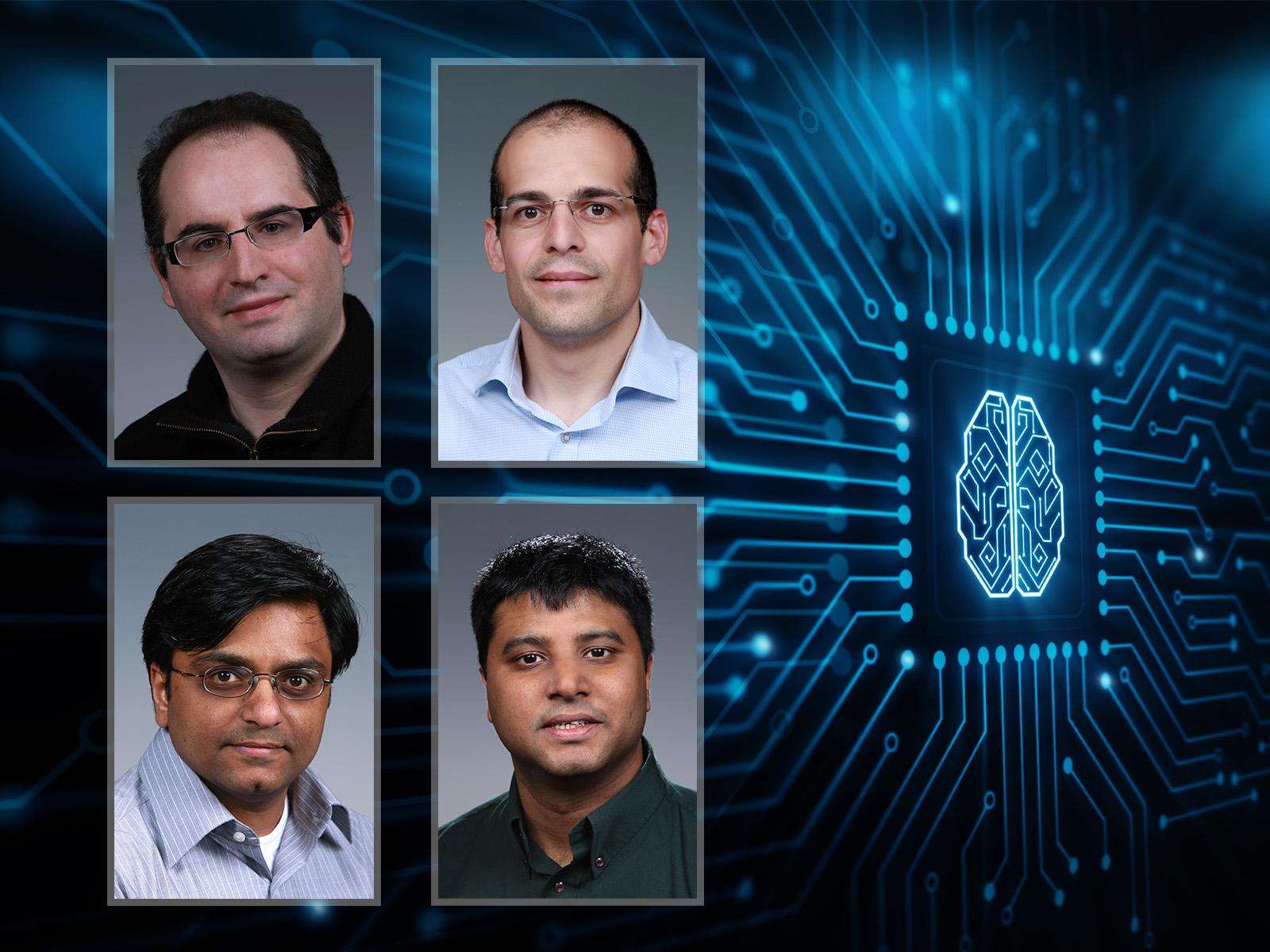Computer Science Teams Showcase Applications for Cybersecurity and Pandemic Detection
Machine learning research shines at Nvidia-sponsored computing conference

Sutanay Choudhury, Mahantesh Halappanavar, Marco Minutoli, and Antonino Tumeo presented at 2021 machine learning conference.
(Illustration by Shannon Colson | Pacific Northwest National Laboratory)
Four Pacific Northwest National Lab (PNNL) computer scientists recently presented their research on machine learning during the 2021 Graphics Processing Unit (GPU) Technology Conference GTC’21. Sponsored by the chip maker Nvidia, the conference focused on research applications for its well-known GPU chip technology. Due to the COVID-19 pandemic, the conference was held virtually.
Using GPU systems to design effective epidemic interventions
One of the highest profile presentations was the talk given by Marco Minutoli and Antonino Tumeo, who discussed their aptly titled work “Designing Effective and Practical Interventions to Contain Epidemics.” The research covers the design and performance of distributed multi-GPU implementations and their application toward devising effective epidemic interventions.
Minutoli and Tumeo introduced a novel algorithm for epidemic intervention to minimize the infection spread. They demonstrated that the algorithm achieves an up to 6.75x reduction in the percentage of people infected, and an up to 98% reduction in the peak of the infection for contact networks. Co-authors included PNNL scientist Mahantesh Halappanavar, who holds a joint appointment in Washington State University's School of Electrical Engineering and Computer Science, and Ananth Kalyanaraman, a professor in the same school who holds a joint appointment in PNNL's Physical and Computational Sciences Directorate.
Improving detection of cybersecurity threats through link prediction
Via video, computer scientist Sutanay Choudhury presented his team’s work on predicting the likelihood of a link in a knowledge graph based on its existing state.
Titled “Self-Supervised Learning of Contextual Embeddings for Link Prediction in Heterogeneous Cyber Networks,” the presentation demonstrated the impact of PNNL’s applied research in machine learning algorithms.
Originally published in The Web Conference 2021, the research shows how self-supervised learning methods for graphs can significantly improve prediction accuracy by as much as 30% over prior baselines on an intrusion detection dataset. In the video, Choudhury explained how his team applied a new method. “We took the algorithm and applied it to cyber datasets. This presentation is about that new method and its application to cybersecurity,” said Choudhury.
In addition to Choudhury, contributing authors of the paper include PNNL staff members Khushbu Agarwal and Colby Ham.
Addressing problems in cybersecurity using natural language processing and a link prediction framework
Weaknesses in computer systems, such as software faults and bugs, and errors in architecture, design, or implementation, provide vulnerabilities that attackers can exploit to compromise system security.
Halappanavar and Purdue University’s Siddhartha Shankar Das presented their team’s work on mapping software vulnerabilities to weaknesses using several large language model-based link prediction frameworks. Their video talk titled “V2W-BERT: A Framework for Effective Hierarchical Multiclass Classification of Software Vulnerabilities” describes a novel framework to address challenging problems in cybersecurity, especially for learning with limited or no data to train.
After GTC ’21, Halappanavar said, “We observed excellent scaling across different generations of Nvidia accelerators, and across different numbers of accelerators. However, learning about the forthcoming architectures and systems from Nvidia is inspiring. Enabled by unprecedented computing power, we are excited to consider novel classification, predictive, and generative tasks that have remained infeasible so far.”
Published: April 28, 2021